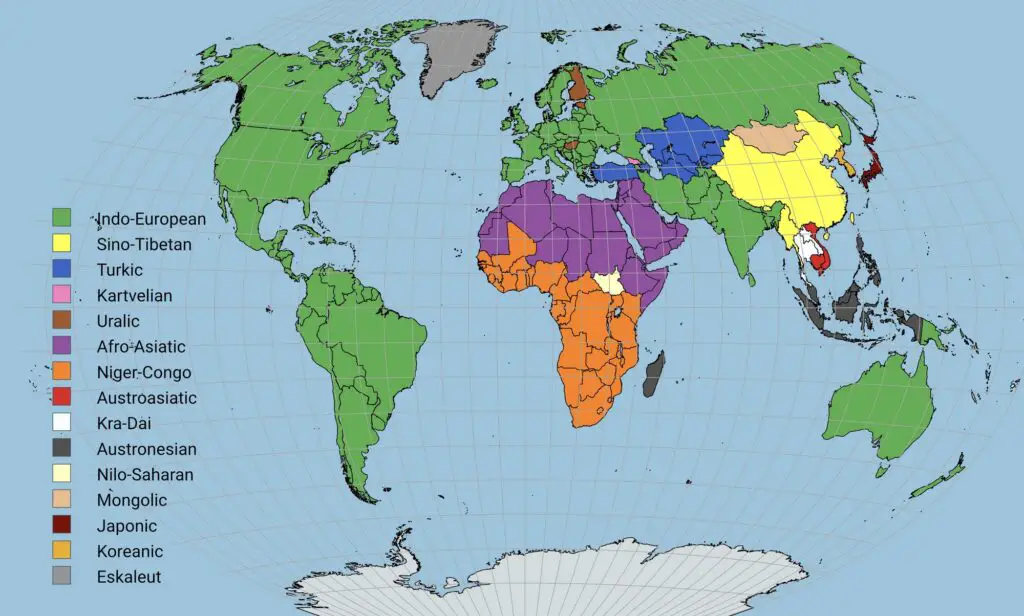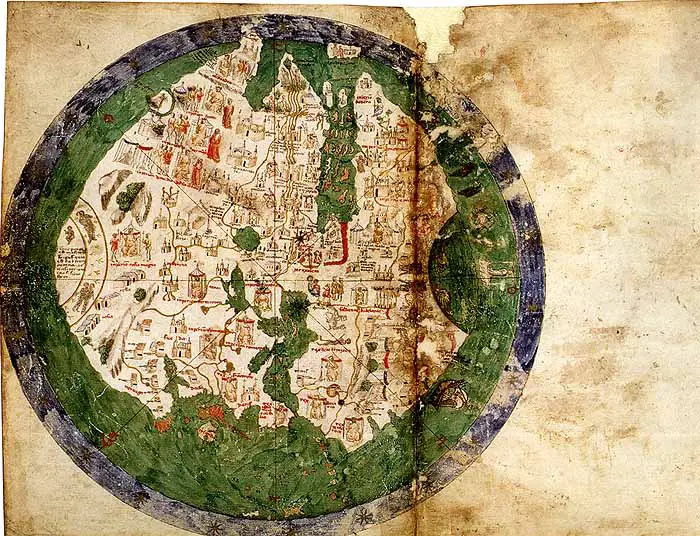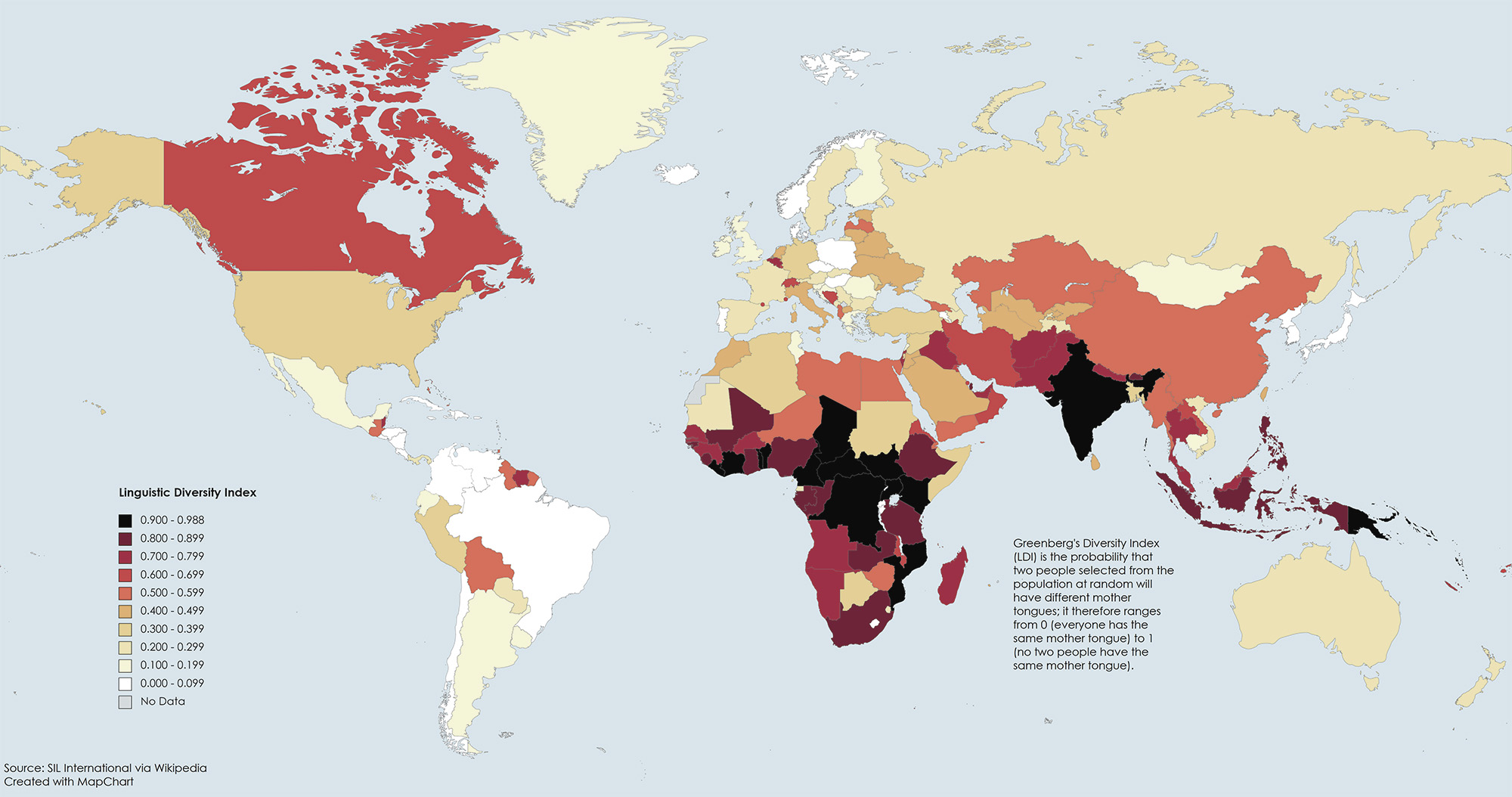Mapping the World’s Language Families
Exploring the world map reveals not just geographical boundaries but also the fascinating distribution of language families across the globe. This post dives into the spatial distribution of various language families, offering insights into their diversity, history, and current trends. From the widespread Indo-European family to the unique Koreanic languages, each family tells a story of human migration, culture, and evolution.
Language Families at a Glance
The world is home to numerous language families, each varying significantly in terms of the number of languages they encompass and the number of people who speak them. Large language families in terms of the number of languages include Niger-Congo, Austronesian, and Indo-European. On the other hand, small language families by the number of languages consist of Koreanic, Japonic, and Kartvelian.
When looking at the number of people speaking these languages, the largest language families are Indo-European, Sino-Tibetan, and Niger-Congo. Conversely, the smallest language families in terms of the number of people are Eskaleut, Kartvelian, and Mongolic.
The world map below created by Reddit user Autistic-Inquisitive shows the most common language family of each country.

| Language Family | Notable Languages | Regions |
|---|---|---|
| Indo-European | English, Spanish, Hindi, Russian | Europe, the Americas, parts of Asia, and Oceania |
| Sino-Tibetan | Mandarin, Cantonese, Tibetan | East Asia, Southeast Asia, South Asia |
| Turkic | Turkish, Uzbek, Kazakh | Central Asia, Eastern Europe, Siberia |
| Kartvelian | Georgian, Mingrelian, Svan | Caucasus |
| Uralic | Finnish, Hungarian, Estonian | Northern Eurasia |
| Afro-Asiatic | Arabic, Hebrew, Amharic, Somali | North Africa, Horn of Africa, Middle East |
| Niger-Congo | Swahili, Yoruba, Zulu, Igbo | Sub-Saharan Africa |
| Austroasiatic | Vietnamese, Khmer, Mon | Southeast Asia |
| Kra-Dai | Thai, Lao, Zhuang | Southeast Asia |
| Austronesian | Malay, Indonesian, Tagalog, Hawaiian | Southeast Asia, Pacific Islands |
| Nilo-Saharan | Luo, Kanuri, Songhay | Central and East Africa |
| Mongolic | Mongolian, Buryat, Kalmyk | Central Asia, Mongolia |
| Japonic | Japanese, Ryukyuan | Japan, Ryukyu Islands |
| Koreanic | Korean | Korean Peninsula |
| Eskaleut | Inuit, Aleut | Arctic regions of North America, Greenland |
Growth and Decline of Language Families
Certain language families are experiencing growth, while others face decline. The Sino-Tibetan language family is expanding, driven largely by the population of China and the global spread of Mandarin. The Niger-Congo family also shows growth, reflecting the high population growth rates in Sub-Saharan Africa. Similarly, the Indo-European family continues to grow, with languages like English and Spanish spreading worldwide.
On the other hand, the Eskaleut language family is in decline, facing challenges from modernization and language shifts. The Nilo-Saharan family also sees a decline, with many of its languages endangered as speakers adopt more dominant languages. Additionally, some languages within the Uralic and Mongolic families are at risk due to small speaker populations and increasing integration into larger national cultures.
Don’t Have a World Map Yet? Check Out These Options on Amazon:








